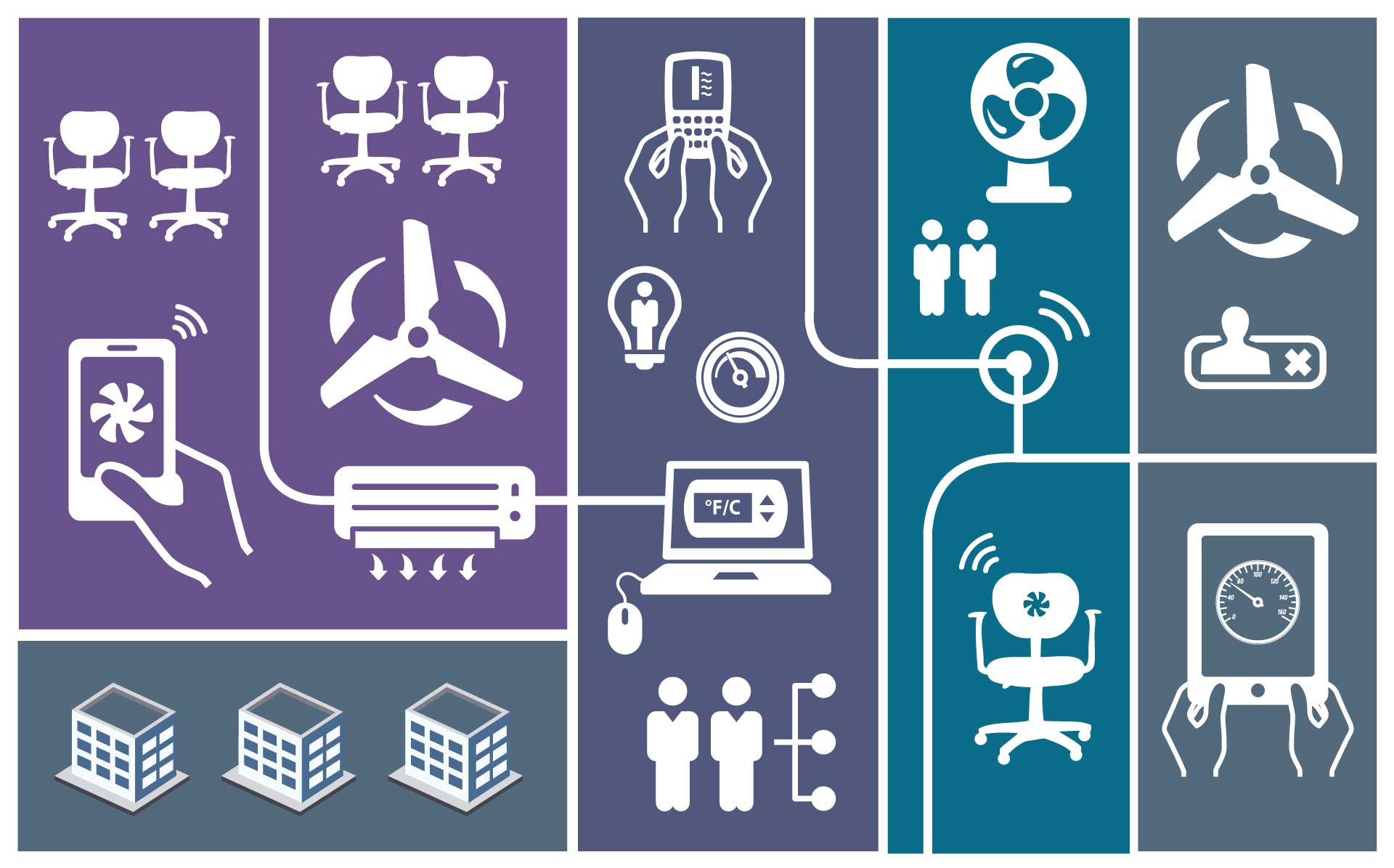Energy Use in Buildings
Mainstreaming Personal Comfort Devices with Modular Controls
This project aims to develop personal comfort devices that are convenient for office use and integrate them with other devices and building management systems in order to make occupants more comfortable and save energy.
While Personal Comfort Devices (PCDs) have a positive pilot-scale track record ensuring individual environmental comfort; increasing resilience; and reducing heating, ventilation, and air conditioning energy consumption, they have not gained much traction in the market. Coordinating PCDs with plug loads and building control systems can further reduce energy use and also shift loads in response to grid needs.
The goal of the project is to overcome the barriers to mainstreaming PCDs in commercial buildings to improve comfort, save energy, and provide resilience by:
- Empowering occupants to control their comfort through a local control hub;
- Enabling a facilities manager to easily reduce or shift energy consumption and reduce comfort complaints through PCD-energy management coordination;
- Facilitating an architect or engineer in specifying PCDs in new or retrofit applications.
The project will develop and test two new PCDs using a new nanostructured carbon heating fabric for leg/feet/hand warming, thermoelectric devices for hand warming and cooling, and an infrared LED device for radiantly heating hands efficiently. The project will also develop a Personal Control Hub with sensors, a fan, and a network that includes automated thermal preference learning; and create and test the customizable Personal Control Ecosystem that integrates the Personal Control Hub with other PCDs, devices, and/or building management systems. Lastly, the project will create a web-based PCD Design Guidebook for heating, ventilation, and air conditioning engineers and real estate managers to specify the best PCD for their application and context.

